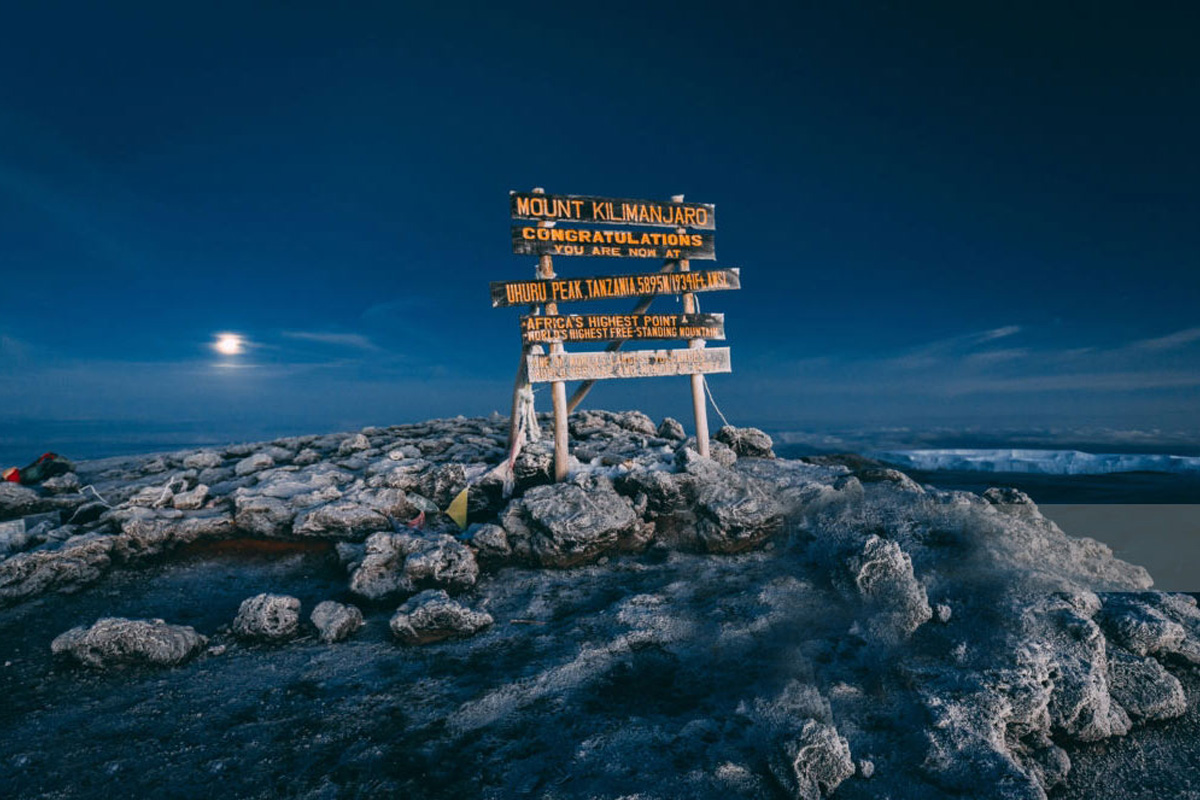Climate and Vegetation of Kilimanjaro
Kilimanjaro: As you ascend the slopes of Kilimanjaro, you will encounter diverse landscapes, including subtropical rainforest, gorgeous moorland, a harsh alpine desert, and a barren arctic zone. Reaching the summit is a reward, offering panoramic views of the Savannah stretching toward the horizon.
Keep your eyes peeled for the playful exotic monkeys of Tanzania swinging through the trees, and visually pleasing zebras grazing on the grass. Nonetheless, the animal habitats found in Tanzania are limitless. The attraction of the Kilimanjaro expedition is the experience encountered along the way. Reaching the top through the diverse landscape from the luscious rainforest to the glacial terrains challenging your endurance is a thrill on its own.
Typically, Mount Kilimanjaro has 5 different vegetation zones from the lower point to the summit:
- The lower slope
- Montane forests
- The moorland
- Alpine desert
- The Summit
A Climber's Guide Through Five Vegetative Zones of Kilimanjaro
The Tropical Mountain Rainforest (1,800m - 2,800m)
The Kilimanjaro rainforest welcomes you with towering trees, including sycamore and juniper, reaching for the sunlight, while moss is found all over the ground. The Kilimanjaro plantlife is equally fascinating due to distinct plants like the "old man's beard" moss hanging on to the branches and also the "impatiens kilimanjari," a plant endemic to this region. The frequent rainfall (1000-2000mm annually) contributes to the humid environment inhabiting the birdlife in Kilimanjaro. The rainforest is home to tropical Boubous, Hartlaub Turacos, and the primate blue monkeys in the canopy.
The Semi-Alpine Heath and Moorland (2,800m - 4,000m):
As you go higher, the rainforest gives way to a chill and more open landscape. Encounter the otherworldly giant groundsel (Senecio Kilimanjari), a towering silhouette accompanying the red hot pokers, lobelias, and heather painting on the slopes. The temperature in this region drops to 0 degrees at night making it frequently misty and cold. The animal sightings are less frequent, but you may be able to spot stripped grass mice and red-eyed doves on the way.
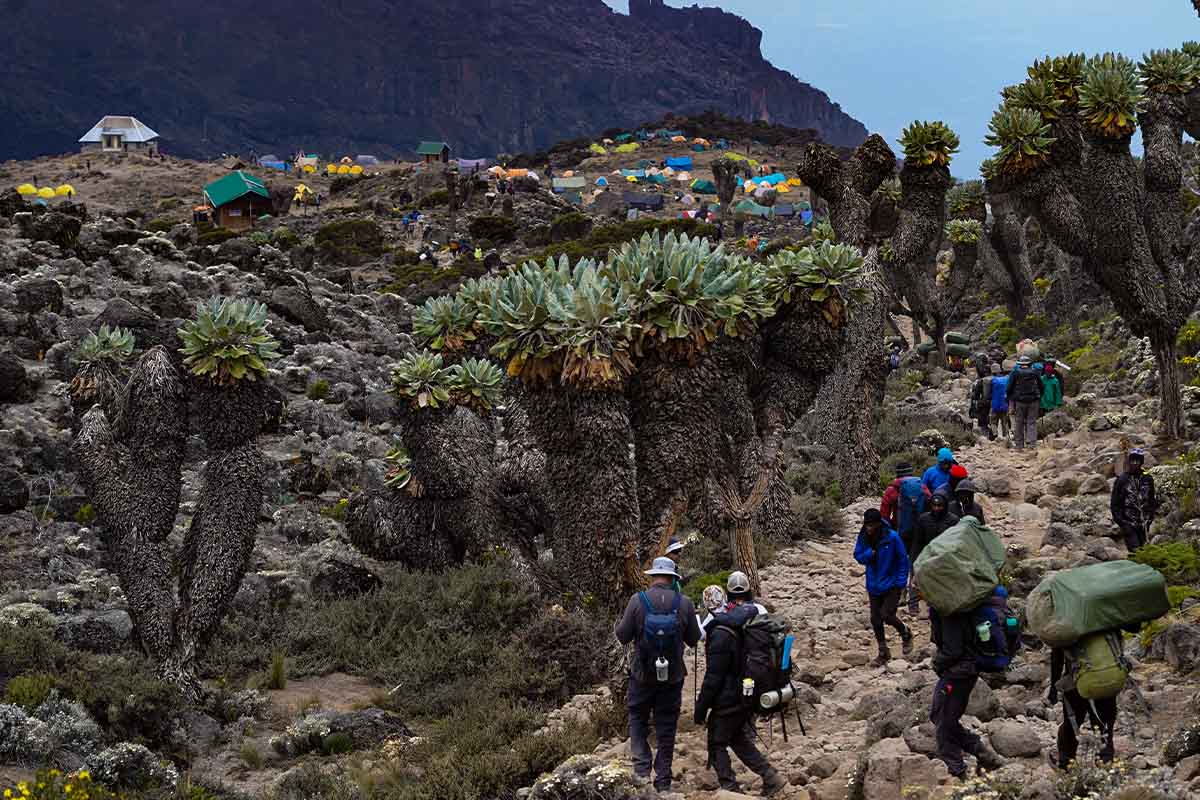
Arid Beauty of the Alpine Desert (4,000m - 5,000m):
The Kilimanjaro vegetation above 4,000m is harsh and extreme due to the variation in temperature and scarcity of rainfall. The Kilimanjaro alpine desert has little to no life and is tenuous. Although the nights are frigid and the day is intensified by the radiation of the sun, few yellow daisies, and the resilience of nature. The vegetation above 4,000 m is sparse caused by the thinner air in high altitude while the climate in Kilimanjaro is a reminder of the mountain's power.
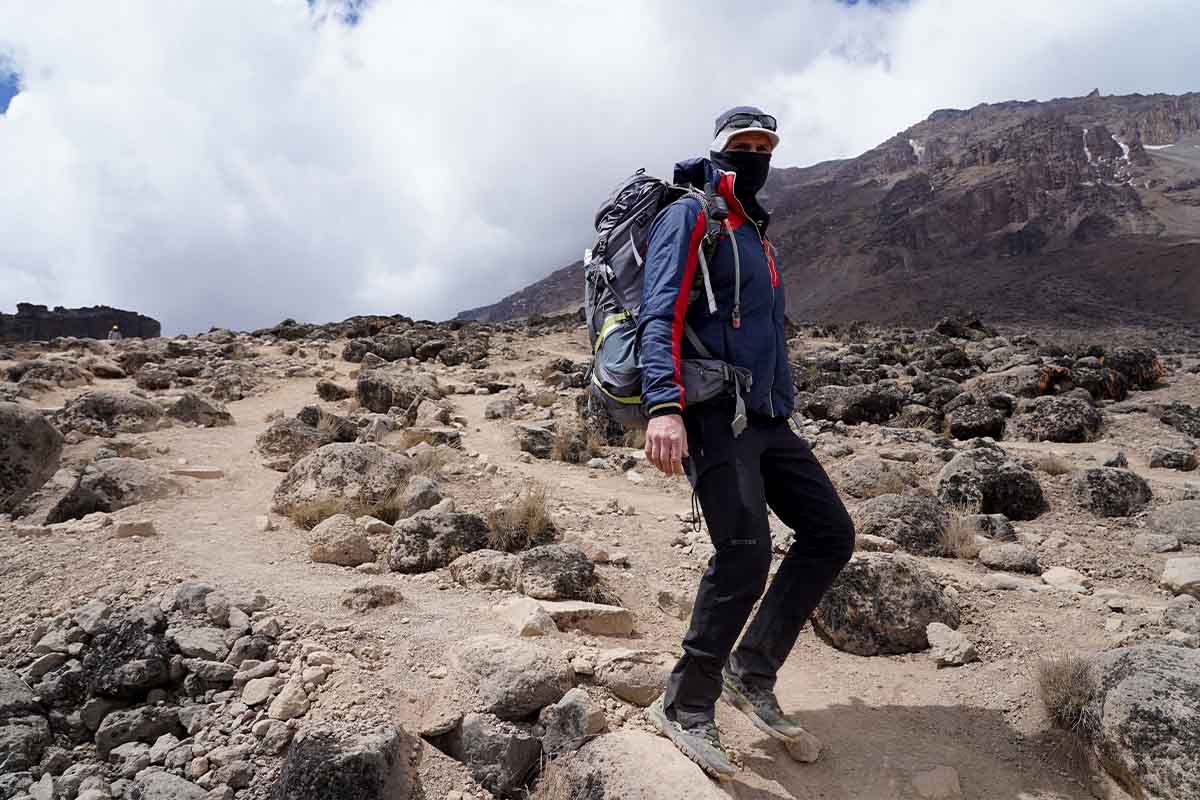
The Frozen Moonscape of the Arctic Zone (5,000m+):
The Arctic zone of Kilimanjaro is home to some of the most beautiful glaciers. This region is dominated by ice and rocks with extreme conditions making it virtually impossible for life to exist. This desolate realm is dominated by rock and ice. The extreme conditions make it virtually impossible for most life forms to exist. Tree-crawling lichens grow at an unbelievably slow rate of about 0.5mm rate enduring the harsh environment. This region is the Kilimanjaro summit zone and the highlight of the trek. Kilimanjaro ice cap is as captivating from up close as it is from far away.
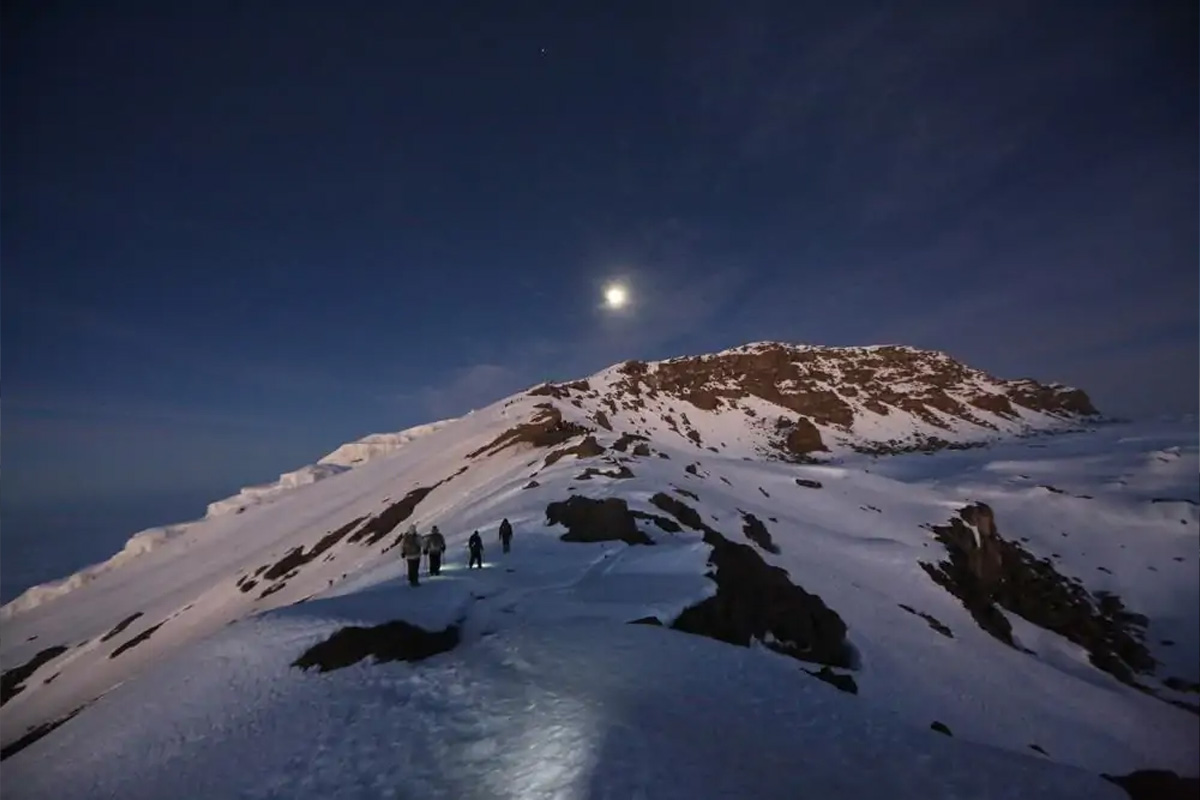
A Bonus Zone: The Tropical Foothills (Up to 1,800m):
The tropical foothills of Kilimanjaro are technically not part of the accent. Despite that, the lower foothills surround the Kilimanjaro National Park, accommodating a rich animal habitat. The wildlife around Kilimanjaro includes Savannah animals like elephants, zebras, giraffes, lions, and other land creatures. This region is home to a diverse bird population that includes eagles, hawks, and hornbills.
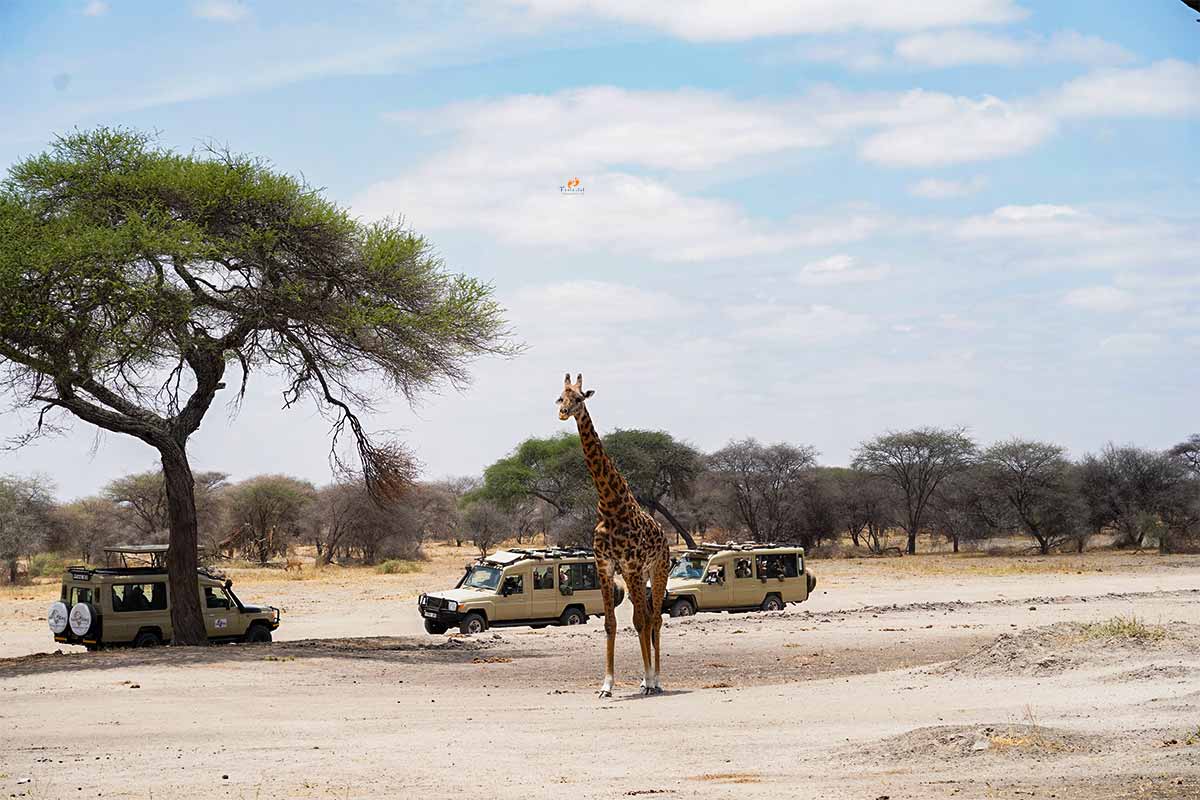
Sightings of these larger animals are uncommon during a Kilimanjaro climb but you can add a Kilimanjaro safari and tour to the itinerary to experience this wonder.
A Köppen Classification of the Everest Base Camp Trek Climate
Everest Base Camp, the gateway to the world's highest peak is packed with breathtaking scenery and challenging terrains. Understanding the unpredictable climate in the mountains is crucial before embarking on this trek for a successful and enjoyable experience. Ideally, the climate of the Everest Base Camp region is well predicted by the Köppen climate classification to choose the perfect season for your adventure.
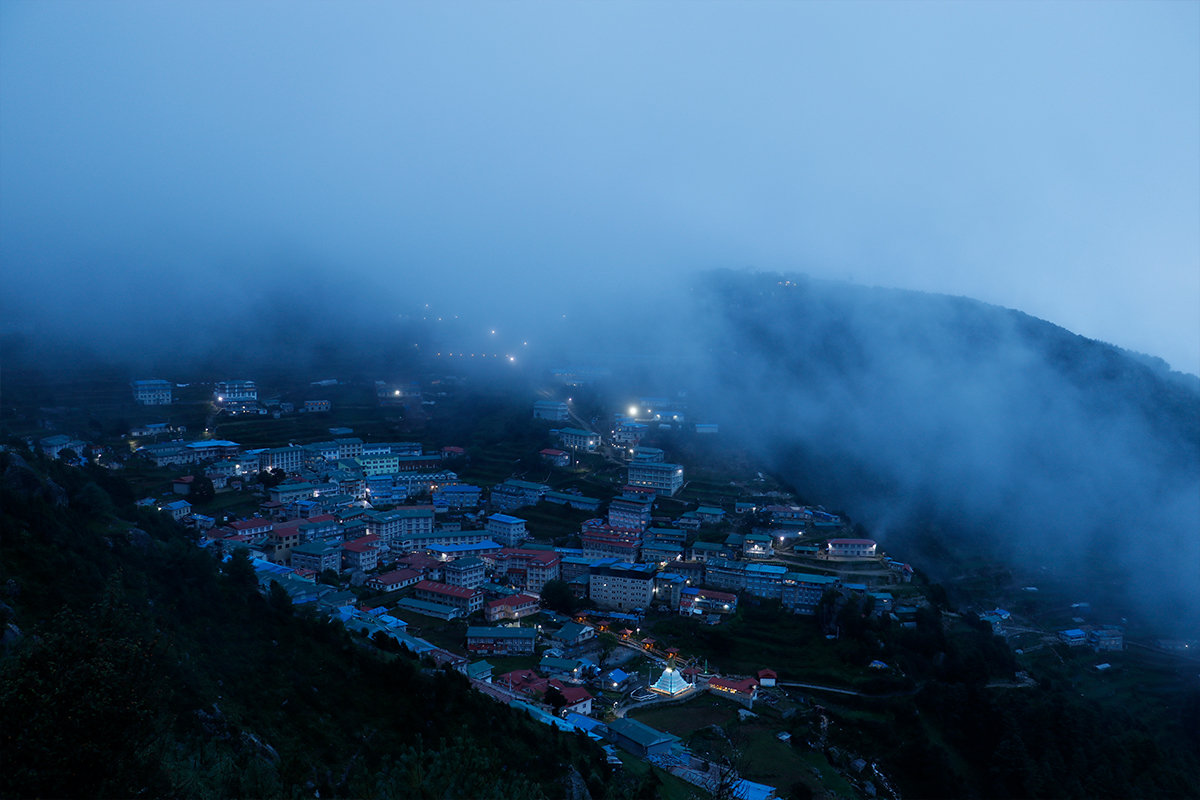
The Köppen climate classification system classifies the global climate depending on the average monthly temperatures and precipitation patterns. Everest Base Camp falls under the ET classification, signifying a Tundra Climate. This classification is further divided based on specific temperature and precipitation thresholds. Here's a breakdown of the key factors that define Everest Base Camp's climate:
Low Average Temperatures: Everest Base Camp experiences consistently cold temperatures throughout the year. The average temperature of the coldest month falls below 0°C (32°F), a defining characteristic of Tundra climates.
Seasonal Variations: Despite being classified as Tundra, Everest Base Camp exhibits some seasonal temperature variations. Considering the Everest Base Camp weather by month, Spring and autumn offer the most pleasant conditions, while winter plummets to extreme lows.
Precipitation: The Everest region receives low annual precipitation reinforcing the Tundra Classification. However, the monsoon season in Nepal invites increased humidity and a higher possibility for rain and snow.
A Glimpse into Everest Base Camp's Seasons In Nepal
Spring (March-May): Considered the trekking season in Nepal, spring offers the most predictable weather with clear skies and minimal precipitation. However, expect slightly colder temperatures (around -2°C to 20°C or 28°F to 68°F) and potentially higher crowds.
Summer (June-August): Summer experiences slightly warmer temperatures (up to 10°C or 50°F at Base Camp) but coincides with the monsoon season. This translates to increased humidity, potential rain showers, and reduced visibility. It can be a good choice for those seeking a less crowded experience, but proper rain gear is essential.
Autumn (September-November): This shoulder season offers a balance of pleasant temperatures. Days are cooler (highs around 5°C/41°F at Base Camp), but the skies return to their crystalline state, providing spectacular views of the peaks. However, some teahouses close during this period.
Winter (December-February): During winter in Nepal, the Everest Base Camp becomes acutely challenging. Temperatures go as low as -17°C or 1°F, with strong winds and heavy snowfall. Most teahouses close, and the trek turns out to be a high-altitude expedition suitable for experienced mountaineers only.
Essential Tips for Your Everest Base Camp Trek
- While the Köppen classification provides a great framework, remember that mountain weather can be pretty unpredictable. Here are some additional tips:
- Monitor the weather forecast: Make sure to be informed about the weather conditions before and during the trek. Look at "Everest Base Camp live weather" for up-to-date information.
- Pack for all conditions: Be prepared for fluctuations in temperature, wind, and precipitation, no matter the time of year. For a detailed account, see the "Everest Base Camp packing list."
- Acclimatization is the key: Give enough time for acclimatization to avoid altitude sickness. This is crucial for a safe and enjoyable trek.
Kilimanjaro vs Everest Base Camp: A Budget Breakdown
Kilimanjaro Trek Cost
Generally considered more expensive than Everest Base Camp despite the shorter duration of the trek. Prices vary greatly depending on the operator, route taken (Marangu Route, Machame Route, etc.), and level of service
Breakdown of cost
- Permit fees (Kilimanjaro National Park fees, camping fees): About $1,000 in USD, though it always changes with routes and park fees in place
- Guide fees and logistics: Depend on operator, length of trek, group size
- Food and accommodation: Very basic camping to comfortable mountain huts
- Porterage fees: Optional, this will add some hundreds of dollars depending on how much gear you want them to carry
- Rental fees for equipment if needed-sleeping bag, trekking poles, etc. Tips for guides and porters (gratitude is customary)
Everest Base Camp Trek Cost
The Everest Base Camp Trek is slightly budget-friendly compared to that of Kilimanjaro, despite having longer trekking days. Costs usually range between $1500-$2000 excluding international flights. Additional costs include the permit and tips for the guides and porters.
Breakdown of cost
- Permit fees: Everest National Park permit, TIMS (Trekkers Information Management System): approximately 100 dollars. The quantity varies according to the permits taken.
- Guide fees and logistics: Higher, in general, due to the length of the trek, complicated logistics involving liaison officers
- Food, and accommodation: Everest Base Camp trek route has teahouses with accommodation on a sharing basis. The cost for the teahouses might differ based on the facilities provided. Even so, you will be able to manage a luxury teahouse or basic teahouse based on your budget and needs.
- Internal flights within Nepal or Lukla helicopter tours might be required depending on the itinerary.
- Equipment rental fees (sleeping bag, down jacket, trekking poles, etc.) if needed
- Tips for guides and porters (gratitude is customary).
Other Considerations for Kilimanjaro and Everest Base Camp Trek
International Flights:
- In order to get to Kilimanjaro, take an International Flight from wherever you travel to the Kilimanjaro International Airport-JRO. Finding a cheap flight to Kilimanjaro will help cover other additional costs for your trek, like hiring a porter.
- EBC flights to and from Nepal, and further domestic flights to Lukla, the gateway to Everest Base Camp can be quite expensive, depending on your origin and season of travel.
Travel Insurance
Travel insurance with medical evacuation coverage is highly recommended for both treks, especially for high-altitude adventures. Find travel insurance that covers high-altitude trekking or medical evacuation from Kilimanjaro/Everest Base Camp.
Visas
Please contact your Tour Operator for current Visa requirements for Tanzania and/or Nepal. Do an internet search using the terms "Tanzania visa on arrival" or "Nepal visa application process" to find relevant information.
Personal Expenses
The cost of the meals and accommodation in Nepal during the Everest Base Camp Trek package will be included if you use a good tour operator based in Nepal. Add on the extra for souvenirs and personal equipment you may want to buy. There is also plenty of information regarding "What to pack for the Kilimanjaro trek" or "Everest Base Camp packing list" to be more specific.
Note: Prices include and exclude vary depending on the tour operator, the exact dates of your trek, and your chosen service level.
Difficulty and Success Rates
Another important factor while deciding to trek is the difficulty associated with each trek. While the Everest Base Camp Trek might seem a little less intimidating at first for various factors compared to Kilimanjaro's Uhuru Peak, the reality is pretty harsh. The thinner air of the Everest region possesses a notable obstacle that requires a decent level of fitness and proper acclimatization.
Kilimanjaro has a few established routes having more gradual gains in elevation, allowing for a slower adjustment to the altitude. Nevertheless, there is a point on the kilimanjaro trek at which many trekkers give up: Stella Point, which has an elevation of 5,756 m. It should not be taken for granted that the apparently gentler slopes are easier to handle. The varied topography of Kilimanjaro- graveled fields and no established base camps on most routes-make it physically exhausting.
Success rates also tend to paint somewhat of a contrasting picture: while the average success rate hovers at around 45%, it should first be considered that there are various ways of doing Kilimanjaro. Logically enough, the harder routes are going to boast considerably lower success rates.
For Everest Base Camp, however, success rates tend to hover in the 90% range on average. This ostensibly phenomenal figure may be due, in part, to a combination of factors which include time on trek being shorter here and the developed teahouse trail into high altitudes.
Overcoming Altitude Sickness
Kilimanjaro vs. Everest Base Camp
Both Kilimanjaro and Everest Base Camp have to grapple with high altitudes and possible altitude sickness through acclimatization strategies. Such a rapid change in altitude can result in Acute Mountain Sickness, whereby the body struggles to accommodate reduced oxygen levels at higher altitudes. Symptoms like headaches, nausea, and dizziness can seriously affect your trek and even become life-threatening.
Kilimanjaro: The regular routes of Kilimanjaro take a period of 6 to 8 days. However, some of the shorter ones, such as the 5-day route, are considered more difficult because of rapid elevation gain, which does not give much time for acclimatization and thus may result in altitude sickness.
Choosing the Right Route for You:
When planning your Kilimanjaro climb, make sure safety is number one, and choose a route that offers enough acclimatization days, even if it means a longer trek. While a quicker ascent may be tempting, allowing your body adequate time to adjust to the altitude is crucial for a successful and enjoyable summit attempt. Remember, a slower and safer ascent is key to conquering Kilimanjaro!
Everest Base Camp: In the case of Everest Base Camp Trek, the mountain provides an added advantage. The longer route of the EBC trek has acclimatization days inbuilt. The typical duration of the Everest Base Camp trek is 10-14 days; most itineraries include rest days for acclimatization. This way, the rise is more gradual, and better acclimatization can be achieved, thereby reducing the chances of altitude sickness.
Unique Experiences
The magic in these treks is far beyond the destination point. Each of these treks provides different experiences that shall be remembered for times to come. The trek to Everest Base Camp takes one into a breathtakingly different landscape from any other.
While the lower regions share the same structure as Kilimanjaro, the terrain quickly changes. Rocky Moraine, giant glaciers, and Sherpa valleys greet you on the way to Everest Base Camp. If the varied landscapes aren't enough, the cultural experience is equally individual. The trail passes directly through traditional Sherpa villages, providing an insight into the way of life here.
Accommodation in Everest Base Camp for the most part consists of teahouses, which are often more social than the huts on Kilimanjaro. These teahouses have dormitory rooms and facilities such as electricity, Wi-Fi, and hot water, at an extra cost. The higher the altitude, the scarcer the water sources become, so proper water purification becomes quite necessary.
Rescue facilities are more accessible in the Everest Base Camp trek than in Kilimanjaro, but treatment of medical emergencies at high altitudes is often difficult.
A Day-by-Day Experience
Number of Days
- Kilimanjaro: The routes in Kilimanjaro usually take from 5 to 9 days. Longer routes offer gentler ascents and greater chances of acclimatization.
- Everest Base Camp: The trek to Everest Base Camp is roughly about 12 to 16 days, which allows a slower acclimatization process.
Distance Trekked Per Day
- Kilimanjaro: Daily walking distances vary by route but lie between 5-12 kilometers (3.7 - 7.5 miles).
- Everest Base Camp: The daily walking distances are much longer, with averages of 10-18 kilometers (5 - 9.3 miles) per day.
Nature of Hiking
- Kilimanjaro: The nature of hiking on Kilimanjaro can be characterized by climbs and descents, with rest days interspersed for acclimatization.
- Everest Base Camp: Everest Base Camp requires more sustained periods uphill, with less opportunities for rest by going down hill.
Physical Capabilities
- Kilimanjaro: Both Kilimanjaro and Everest Base Camp require a good level of physical fitness. However, Kilimanjaro, with its varied topography and without established base camps on some routes, is more physically demanding.
- Everest Base Camp: Everest Base Camp requires more endurance in that one has to trek for a longer period and at higher altitudes. Previous hiking experience, especially at high altitudes, is highly desirable for Everest Base Camp.
Routes
Kilimanjaro
- Lemosho Route: This route is the most beautiful and very popular kilimanjaro route. The route begins on the western slope and south of Kibo Peak.
- Machame Route:
- Marangu Route
- Rongai Route
- The Northern circuit
- Umbwe Route
- Shira Route
Everest Base Camp Trek
- Gokyo Lakes
- Three Passes Trek
- Trek from Phaplu or Jiri
Choosing Your Adventure
The decision between Kilimanjaro and Everest Base Camp ultimately boils down to your personal goals, experience level, and risk tolerance.
Kilimanjaro could be the ideal choice for those seeking:
- Physically demanding yet achievable challenge with breathtaking views
- A shorter trek
- Culturally humbling atmosphere with camping experience
Everest Base Camp could be your perfect adventure for those seeking:
- The challenge of conquering the world's highest base camp
- A unique cultural experience in the Himalayas
- Longer trek with teahouse amenities
- More readily available rescue facilities
Remember that both Kilimanjaro and Everest Base Camp require meticulous planning, proper training, and a healthy dose of respect for the mountain's power. Choose a trek that suits your aspirations and put in due preparation to make it a safe and unforgettable journey.
Ultimately, the best choice depends on your preferences!
How hard is the Everest Base Camp trek?
The EBC trek is graded as moderately difficult, with no technical climbing, but high altitude and long distances involved. The physical fitness required to handle this is very good, along with proper acclimatization.
What is the best time to go trekking to Everest Base Camp?
The spring-March to May and autumn-September to November offer the best weather, with clear skies and moderate temperatures. These are also the main seasons. Summer-June to August is during the monsoon period; there might be rain showers, but it is less crowded. Winter is bitterly cold and best left to very experienced mountaineers.
How long does the Everest Base Camp trek take?
The typical EBC trek takes about 12-14 days, though there are several variations depending on the route and pace of trekking. This includes time for acclimatization to avoid altitude sickness.
How much does the Everest Base Camp trek cost?
Costs vary depending on group size, route chosen, and amenities. Generally, expect to pay a range of $1500 to USD 2000+, covering permits, guide fees, accommodation, and meals.
Do I need a guide for the Everest Base Camp trek?
Not necessarily, though highly recommended with a certified guide for inexperienced trekkers, as guides offer valuable knowledge of the terrain, ensure safety, and help with acclimatization.
What is the altitude of Everest Base Camp?
It lies at an altitude of 5,364 meters (17,598 feet). At this high altitude, proper acclimatization is necessary to avoid altitude sickness.
What training is recommended for the Everest Base Camp trek?
Cardio exercises like hiking, running, or cycling consistently over a number of months in advance are needed for the trek. Your body requires good stamina to tackle long-distance treks, and your legs must be in shape to work under the immense burden of an increased altitude.
Headache, nausea, dizziness, fatigue, shortness of breath, and sleep disturbance are common symptoms of altitude sickness. Be aware and descend if the symptoms worsen.
What permits are required for the Everest Base Camp trek?
A Trekkers Information Management System, or TIMS card, and a Sagarmatha National Park permit are mandatory for the EBC trek. Your trekking agency can assist in obtaining these permits.
What are the major pieces of equipment I will require for the Everest Base Camp Trek?
Clothing for extreme fluctuation in temperature, strong hiking boots, a good and reliable backpack, trekking poles, sleeping bag that allows very low temperature is the major requirements on EBC.

